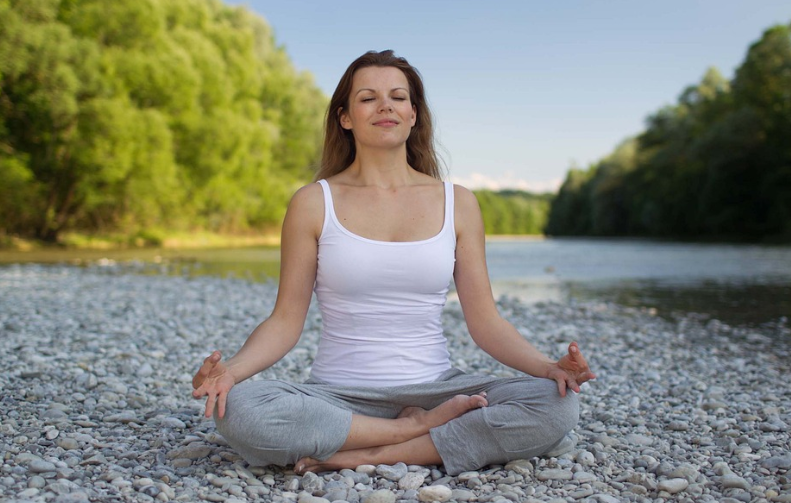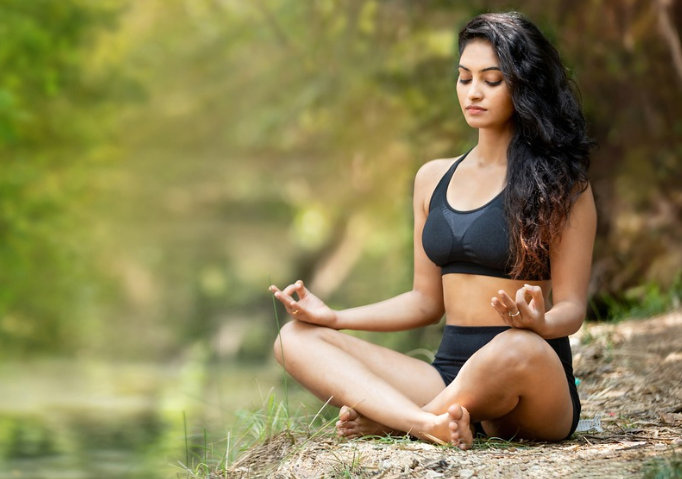Meditation Or Yoga For Anxiety
Learn which is more effective for anxiety: meditation or yoga.

Selfpause Affirmation App
Download the app to get 1,000’s of affirmation meditations and everything you need to write, record and listen to your own.
If you’re looking to reduce anxiety, consider using meditation or yoga as a remedy. Many studies have shown that these two practices can be helpful for anxiety sufferers. Practicing in a calm and safe space can help you engage your relaxation response. During yoga poses, you can observe your thoughts and engage your body’s natural relaxation response.
Practice in a space that feels comfortable and safe

To practice meditation or yoga for anxiety, start by finding a place that is comfortable and safe for you. Choose a room that is free of distractions. You don’t need to have a lot of space, but it must feel safe for you to be able to practice the exercises. You don’t need a special place to practice, so you can practice in your home or join a class. Make sure to stop practicing if your anxiety begins to rise.
You can use a bench, a lounge chair, a rocking chair, or a hammock. It can also be helpful to have an elevated place, such as a hammock or a swinging chair suspended from the ceiling. Choose seating options that make you feel comfortable and safe. Depending on how comfortable you feel, the seating arrangements may change throughout your meditation session. It is best to have several options so you can change them whenever necessary.
Ideally, you should be able to find a room with a moderate climate. Outdoor areas can be ideal for practicing meditation, but indoor spaces can also benefit from a natural atmosphere. Choose a space that feels comfortable, and try to avoid clutter.
If you are a beginner to meditation, you may want to find a place with minimal distractions. More advanced meditators may be able to meditate anywhere. Meditation may be most beneficial for people who are experiencing high levels of stress. You can sit, lie, or walk in any position that feels comfortable, but make sure to maintain a good posture throughout the exercise.
Choosing a space that feels safe and private is essential. Your meditation or yoga space should be a place where you can be alone. Although you may find it difficult to find a quiet, comfortable room, it will be worth the effort. There are few people who have a perfect space for practicing meditation.
Engage the relaxation response

One of the best ways to alleviate anxiety is by engaging in the relaxation response. This process is triggered when the body experiences stress, and it involves turning off the body’s fight-or-flight response. When done regularly, this response restores the body and mind to pre-stress levels. It can be used to help treat a wide variety of health problems, including anxiety and chronic stress.
Studies have shown that engaging the relaxation response can reduce blood pressure, heart rate, and oxygen consumption. It can even improve the symptoms of a variety of conditions, including insomnia, arthritis, cancer, infertility, and depression. In addition, it can reduce levels of stress hormones in the body.
Benson was a pioneer in mind-body medicine, and his research focused on the relaxation response. He discovered that monkeys had the ability to regulate blood pressure by using their brainpower to relax. He published his findings in 1975, and his research proved that the relaxation response can counteract the physiological effects of stress.
Meditation is an excellent way to help you cope with anxiety. Meditation techniques like yoga or guided imagery help you focus on your breath and trigger the relaxation response. You should use these methods one or two times a day, but you should avoid doing them right before bed or after meals.
Deep breathing techniques can also help you relax. These techniques focus on taking slow, deep breaths. This will trigger the relaxation response in your body, which will make you feel calmer. This technique is easy to learn, and it can be used anywhere. And even if you are not able to meditate or practice yoga, you can always practice breathing exercises.
Progressive muscle relaxation is another technique that can help you calm down. It involves tensing and relaxing specific muscles. You should start at the top of your body and slowly work your way down to the feet. This technique helps you relax your tense muscles, which can help you deal with anxiety.
Research has shown that these relaxation techniques are effective in reducing stress hormones and improving quality of life. They have also been shown to reduce pain perception and increase immunity. Some studies have even compared the effectiveness of these methods to cognitive behavioral therapy, in which patients learn how to recognize harmful thinking patterns and work to change them.
Although autogenic training is often used in conjunction with cognitive behavioral therapy, it can be used as a standalone tool for anxiety treatment. The techniques promote the relaxation response in the body by slowing breathing, lowering blood pressure, and enhancing the overall state of well-being. The technique has originally been developed for physical relaxation, but now is frequently used in counseling sessions to treat anxiety and stress.
A number of benefits of practicing yoga include regulating the heart rate, improving flexibility, relaxing muscle tension, and developing body awareness. Practiced regularly, yoga also stimulates the Relaxation Response, which helps the body and mind heal. While yoga is an excellent way to relax, it requires time and practice.
Our Top FAQ's
Both meditation and yoga have been shown to have a number of benefits for anxiety, including reducing stress and promoting relaxation. They can help to calm the mind and body, and can also help to improve overall mental and physical well-being.
While both meditation and yoga have been shown to be effective for reducing anxiety, the specific techniques and practices used in each can vary, and what works best for one person may not be as effective for another. It may be best to try out different techniques and practices to see what works best for you.
Some common techniques and practices for meditation that may be helpful for anxiety include mindfulness meditation, focused attention meditation, and loving-kindness meditation. For yoga, some practices that may be helpful for anxiety include deep breathing exercises, gentle stretches and poses, and restorative yoga.
Meditation and yoga can be used as standalone treatments for anxiety, but they may also be used in combination with other therapies, such as cognitive-behavioral therapy (CBT), to provide a more comprehensive approach to managing anxiety.
While meditation and yoga are generally considered safe and effective ways to manage anxiety, it’s important to remember that they are not a substitute for medical treatment. If you are experiencing severe or debilitating anxiety, it’s important to speak to a healthcare provider to determine the best course of treatment for you.
